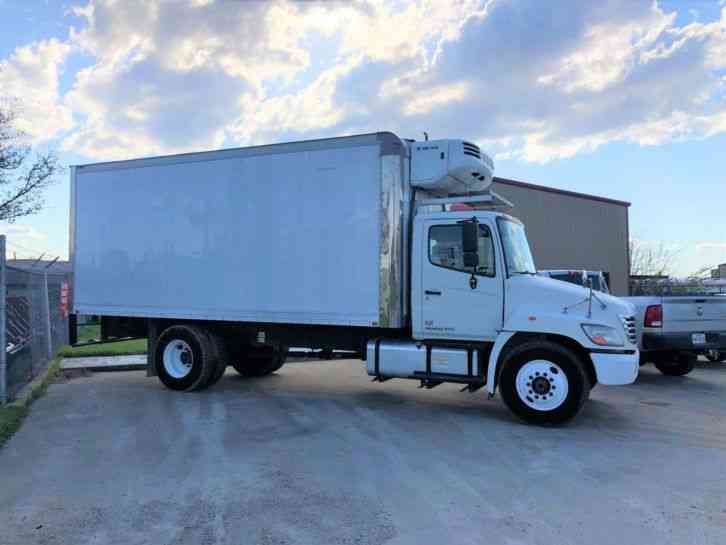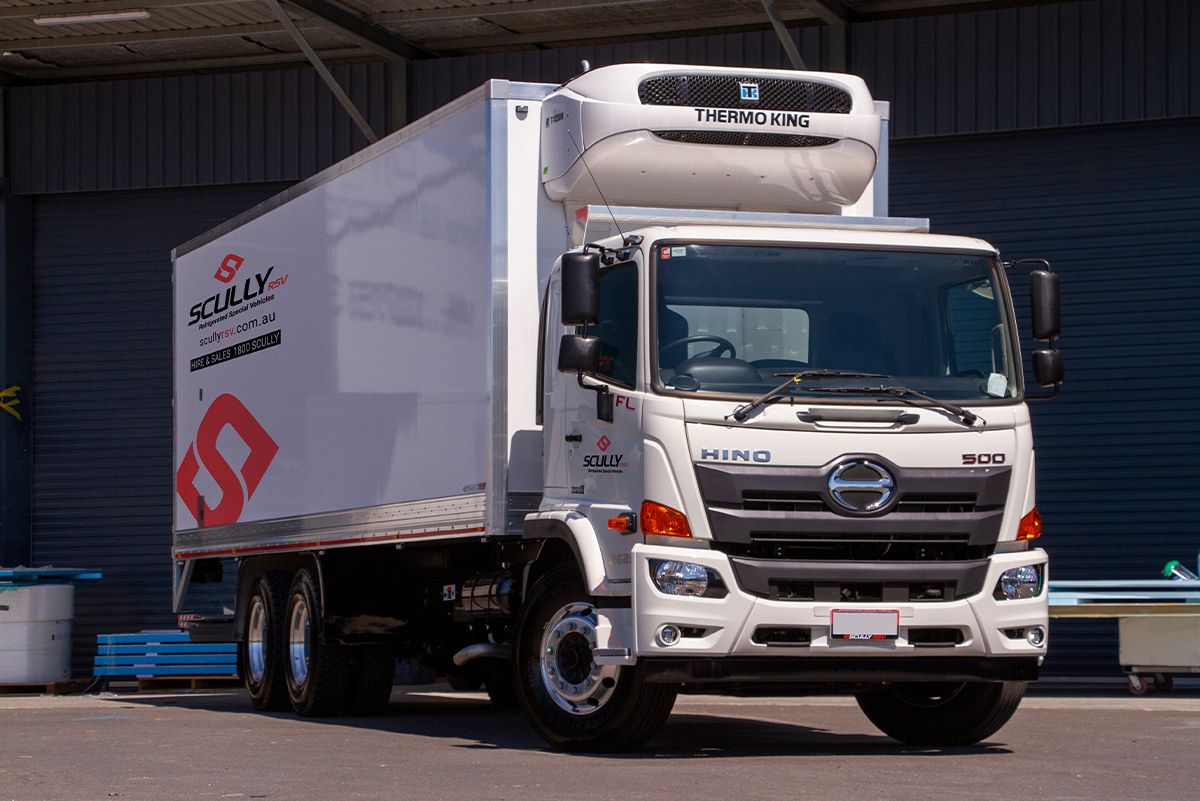Top Innovations in Transportation Refrigeration: Enhancing Effectiveness and Security
The landscape of transportation refrigeration is undertaking significant change, driven by developments intended at improving both performance and security. As these technologies continue to advance, it is vital to discover their implications on functional practices and regulative conformity, motivating a closer evaluation of exactly how they reshape the future of transport refrigeration.
Smart Temperature Level Monitoring Solutions
In the realm of transportation refrigeration, smart temperature tracking systems have actually arised as an important innovation for ensuring the integrity of temperature-sensitive products. These innovative systems utilize Internet of Points (IoT) technology to offer real-time data on temperature level changes, making it possible for drivers to keep optimum conditions throughout the supply chain. By continuously tracking the temperature of refrigerated containers and cars, companies can swiftly identify discrepancies that may compromise product high quality.

Additionally, smart surveillance systems typically include automated informs and notifications, permitting stakeholders to react promptly to any type of potential problems. This proactive strategy not only lessens the threat of putridity but additionally improves compliance with regulative standards governing food safety and security and pharmaceutical transport.
The combination of information analytics within these systems additionally helps with anticipating maintenance, assisting drivers to foresee potential devices failures prior to they take place. This capability decreases downtime and enhances functional efficiency, inevitably leading to cost savings.
Eco-Friendly Refrigerants
Smart temperature surveillance systems play an important duty in preserving product top quality, however the performance of transport refrigeration additionally depends upon the choice of cooling agents used. As ecological concerns increase, the change in the direction of environment-friendly cooling agents has come to be crucial. Traditional refrigerants, such as hydrofluorocarbons (HFCs), are notorious for their high Global Warming Prospective (GWP), contributing dramatically to climate change. In contrast, arising options like hydrocarbon-based refrigerants and hydrofluoroolefins (HFOs) present reduced GWP options, using both efficiency and sustainability.
These green refrigerants not only reduce ecological impact but likewise line up with worldwide regulations intended at phasing out damaging compounds. Their adoption can cause enhanced energy efficiency, eventually minimizing operating expense for transportation refrigeration systems. The usage of all-natural cooling agents, such as ammonia and carbon dioxide, has acquired traction due to their excellent thermodynamic properties and reduced ecological impact.
Investing in environment-friendly refrigerants is not simply a governing compliance step; it stands for a strategic choice that improves brand track record and fosters consumer loyalty. thermo king truck refrigeration units. By prioritizing lasting methods, firms can add to a greener future while ensuring the honesty of delivered products
Advanced Insulation Products
Using advanced insulation products is critical for maximizing transport refrigeration systems, as they dramatically improve power performance and keep constant temperature level control. Standard insulation methods commonly drop short in protecting against thermal transfer, resulting in raised energy intake and fluctuating temperature levels within refrigerated areas.
Arising materials such as vacuum cleaner protected panels (VIPs) and aerogels offer remarkable thermal resistance, enabling thinner profiles without endangering performance. VIPs, for instance, use a vacuum cleaner layer to lessen convective and conductive heat transfer, making them optimal for space-constrained applications. Aerogels, known for their porous and light-weight framework, offer exceptional insulation while substantially reducing total system weight.
Furthermore, integrating phase change products (PCMs) right into insulation systems can better support temperature levels during transit. These products take in and release thermal energy, efficiently buffering against external temperature level variations.
The combination of these advanced insulation materials not just reduces the operational expenses related to power usage but additionally expands the rack life of temperature-sensitive goods. As the transport refrigeration market remains to progress, the fostering of cutting-edge insulation modern technologies will certainly be pivotal in enhancing both efficiency and safety in refrigerated transportation.
Automated Course Optimization
The efficiency of transport refrigeration systems is considerably improved with automated route optimization, which leverages advanced algorithms and real-time data to figure out the most effective paths for delivery. By analyzing numerous aspects such as web traffic patterns, weather condition problems, and shipment windows, these systems can significantly lower traveling time and fuel consumption.
Automated course optimization reduces human error and subjective decision-making, which can lead to inefficiencies. This modern technology makes it possible for fleet supervisors to assign sources better, making sure that cooled goods keep their needed temperature level throughout the trip. By maximizing paths, companies can additionally improve consumer contentment with timely deliveries.
Additionally, automated systems can adapt to unpredicted situations, such as roadway closures or abrupt website traffic spikes, permitting for dynamic rerouting. This adaptability not only secures the honesty of temperature-sensitive items but additionally adds to general operational performance.
Applying automated course optimization can lead to considerable price financial savings while minimizing the carbon footprint connected with transportation. As companies significantly prioritize sustainability, this development stands apart as a critical part in modern transportation refrigeration, straightening functional objectives with ecological duty. Ultimately, automated path optimization represents a substantial advancement in the pursuit for effectiveness and safety in transportation refrigeration.

Real-Time Information Analytics
Automated path optimization dramatically gain from the assimilation of real-time information analytics, which provides critical insights into the efficiency of transport refrigeration systems. By using real-time data, transportation drivers can keep track of temperature fluctuations and tools check that performance, making certain that subject to spoiling goods are maintained within needed criteria throughout transportation. This aggressive method not only boosts the quality of the carried items however additionally minimizes the threat of putridity and loss.

In addition to enhancing effectiveness, real-time analytics improves security by ensuring compliance with regulatory criteria for temperature level control. This not just secures public health and wellness however likewise fortifies a business's credibility - refrigerated transportation thermo king. As the transport refrigeration industry advances, the combination of real-time data analytics arises as a cornerstone for driving technology, sustainability, and functional quality
Final Thought
To conclude, the innovations in transportation refrigeration dramatically improve both efficiency and security within the industry. Smart temperature level monitoring systems and real-time information analytics supply essential oversight, while eco-friendly refrigerants and progressed insulation materials add to sustainability and energy efficiency. In addition, automated route optimization formulas not just decrease traveling time but likewise decrease ecological influence. Collectively, visit here these developments stand for a crucial development in transport refrigeration, guaranteeing conformity with governing standards and promoting a greener future.
The landscape of transportation refrigeration is undergoing considerable transformation, driven by advancements aimed at improving both efficiency and safety.Smart temperature monitoring systems play an essential role in keeping product high quality, yet the efficiency of transportation refrigeration additionally hinges on the option of cooling agents used. Their adoption can lead to enhanced power performance, inevitably decreasing operating expenses for transportation refrigeration systems. Eventually, automated path optimization represents a significant innovation in the mission for efficiency and security in transportation refrigeration.
In conclusion, the innovations in transport refrigeration dramatically improve both performance and security within the market.